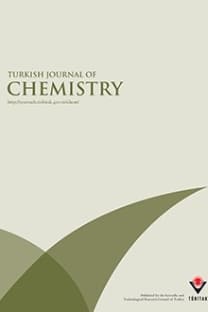Competitive hydrogen bonding in aspirin-aspirin and aspirin-leucine interactions
Competitive hydrogen bonding in aspirin-aspirin and aspirin-leucine interactions
- ISSN: 1300-0527
- Yayın Aralığı: 6
- Yayıncı: TÜBİTAK
Maher Abdel Aziz EL-HASHASH, Ahmed Youssef SOLIMAN, İbrahim Essam EL-SHAMY
Transmission FT-IR spectroscopic analysis of human kidney stones in the Hyderabad region of Pakistan
Muhammad Hassan KHASKHELI, Syed Tufail Hussain SHERAZI, Huma Mazhar UJAN
Ali RAMAZANI, Kourosh DASTANRA, Fatemeh Zeinali NASRABADI
Cyril Sunday UME, Erdoğan ALPER
Sultan BAYTAŞ, Nilüfer Nermin Turan DURAL, Yeşim ÖZKAN
Evaluation of thermodynamic parameters of cadmium adsorption on sand from Temkin adsorption isotherm
Javad SAFAEI-GHOMI, Fariba SALIMI, Ali RAMAZANI
Copolymerization of N-Vinyl pyrrolidone with methyl methacrylate by Ti(III)-DMG redox initiator
Ajithkumar Manayan PARAMBIL, Yashoda Malagar PUTTAIAHGOWDA
Celal DURAN, Duygu ÖZDEŞ, Elif Çelenk KAYA, Halit KANTEKİN
Synthesis, characterization, and antioxidant activities of new trisubstituted triazoles
Kemal SANCAK, Yasemin ÜNVER, Dilek ÜNLÜER, Esra DÜĞDÜ, Gülcan KÖR
